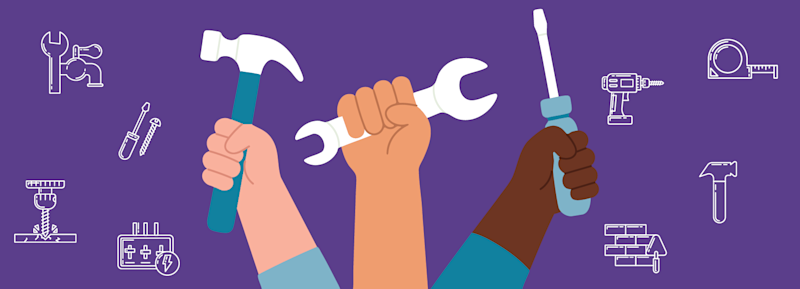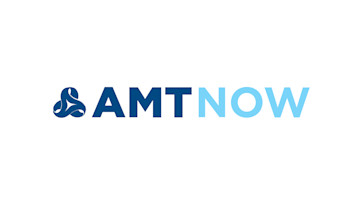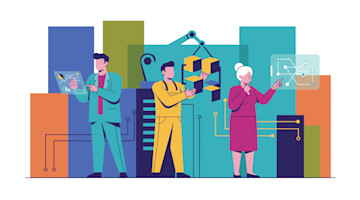The annual Aspen Ideas Festival brings together an array of people – scientists, economists, artists, foreign policy experts, and others – who give, essentially, long-form TED talks for subject-matter experts.
This year, one presentation discussed a topic of particular importance to the manufacturing community: the “essential economy,” the men and women who work in the construction, HVAC, or plumbing industries – and machining. Most people probably never think of a plumber as “essential” – until they need one.
What’s more, it was presented to a crowd whose familiarity with a factory was probably limited to films about the Great Depression – and delivered by a man with a whole lot of industry credibility: Jim Farley, president and CEO of Ford Motor Co.
Farley didn’t talk about electric vehicles or the secretive skunkworks program Ford operates in Long Beach, California, about 2,000 miles west of its headquarters in Dearborn, Michigan. Instead, he shared statistics that likely surprised the audience. He discussed how we are short 600,000 factory workers, 500,000 construction workers, 400,000 auto mechanics, and 100,000 warehouse workers. Numbers we are all too familiar with.
“AI and battery plants seem really exciting, but they all need HVAC installers, electricians, and welders,” he said.
While it is encouraging that influential people like Farley are using their voice to advocate for more people in the trades, let’s face it: This problem goes back decades and will take years to fix.
Part of the problem stems from the cultural stigma people face from preferring to work in a tool and die shop rather than pursuing a four-year college degree that may leave them with massive debt and an education that doesn’t easily lead to a salary capable of repaying it.
In manufacturing, part of the labor shortage problem comes from the small number of apprenticeship programs administered by companies. Consequently, the number of people with the skills needed in our evolving industry is diminishing – and let’s not lose sight of the fact that many skilled workers are retiring.
The simple truth is that the government alone will not solve this skills gap. Manufacturing companies must put their real-world expertise to use and create programs to address the industry’s specific needs.
Understandably, shops unfamiliar with how training should be conducted may hesitate to jump into educating a new generation of workers. However, helpful resources are readily available, such as the Manufacturing Institute’s National Institute for Metalworking Skills credentialing program and Tooling U-SME’s comprehensive suite of courses.
Another place where assistance is available – which might actually turn into a productive partnership – is a local community college. These two-year institutions generally focus on vocational education, and with more than 1,000 throughout the country, one is undoubtedly in your vicinity. Many community colleges have co-op programs that can be advantageous.
Henry Ford College, the community college two miles from Farley’s office, offers a Machine Tool Technology/CNC program. Its description reads: “By the time you finish, you will be able to solve complex technological problems through critical analysis, practice safe work habits in a manufacturing environment, and gain entry-level employment as a machine tool operator or CNC programmer.”
How many four-year colleges are likely to claim that their graduates can “gain entry-level employment” doing anything related to what’s embossed on their diploma?
While previous decades also saw a lack of people in skilled trades, significant differences exist today. For example, the tariff regime initiated on April 2, 2025 – “Liberation Day” – has driven substantial reshoring of manufacturing. This means a greater demand for workers. Odds are, the wages that will be offered will develop supply to meet that demand.
Another crucial difference goes back to the Maker Movement’s beginning in 2005 and the subsequent birth of the Maker Faire in 2006 in San Mateo in Silicon Valley. Along with the development of affordable 3D printing machines, easy-to-use CAD, and other accessible technologies, interest in manufacturing began to shift when people realized that making things was cool. Today, there are some 860 makerspaces in the United States – places where like-minded people can share ideas, equipment (3D printers, CNC machines, laser cutters, basic hand tools, etc.), materials, and space.
Certainly, “makers” can become “machinists.”
If the problem of the essential economy is to be solved – and let’s face it, it is a problem – then manufacturers, educational institutions, and governments (local, state, federal) must collaborate to turn this around.
As Farley told the Aspen audience: “We need a new mindset that recognizes the importance of this essential economy to our vibrancy and sustainability as a country.”
Or as Henry Ford – the man who founded the company where Farley works – put it: “Nations are great as they are prosperous as they are industrious as they are just.”
We cannot afford to overlook the “industrious” part, though for too many years, too many people have.
To read the rest of the International Issue of MT Magazine, click here.






